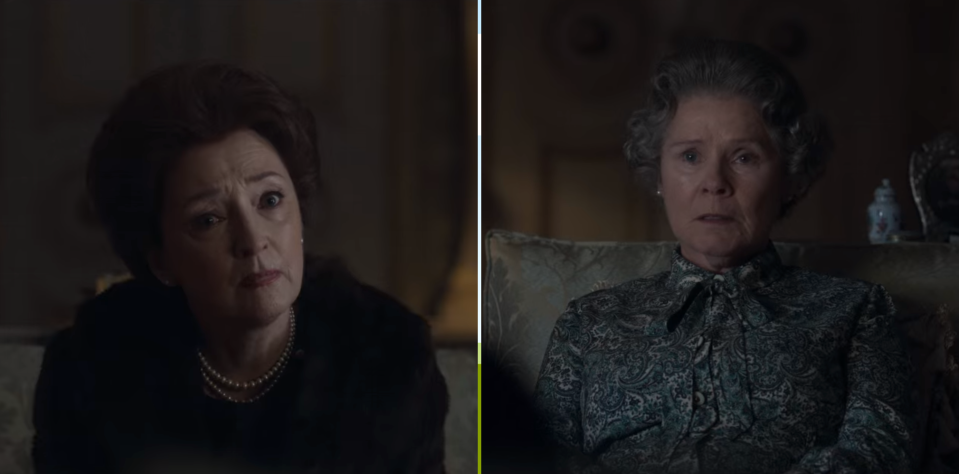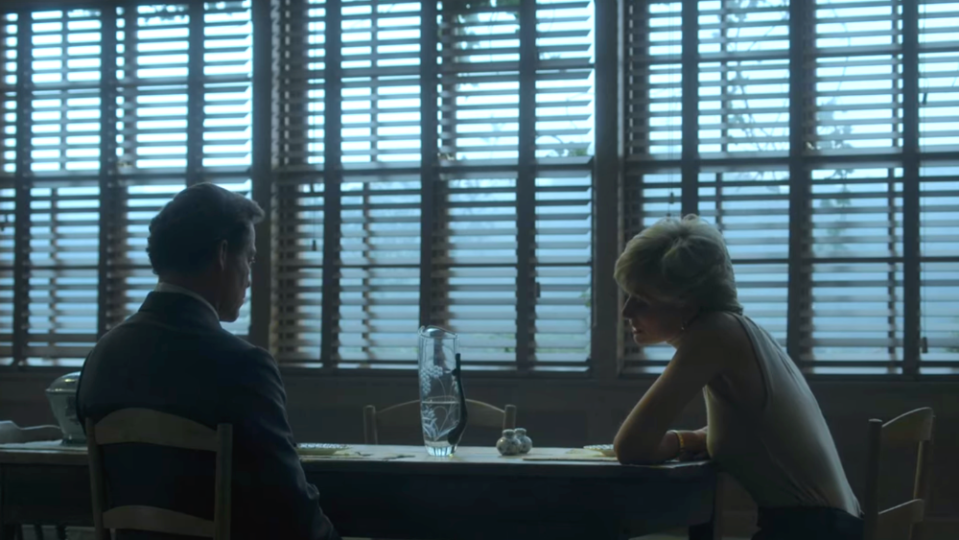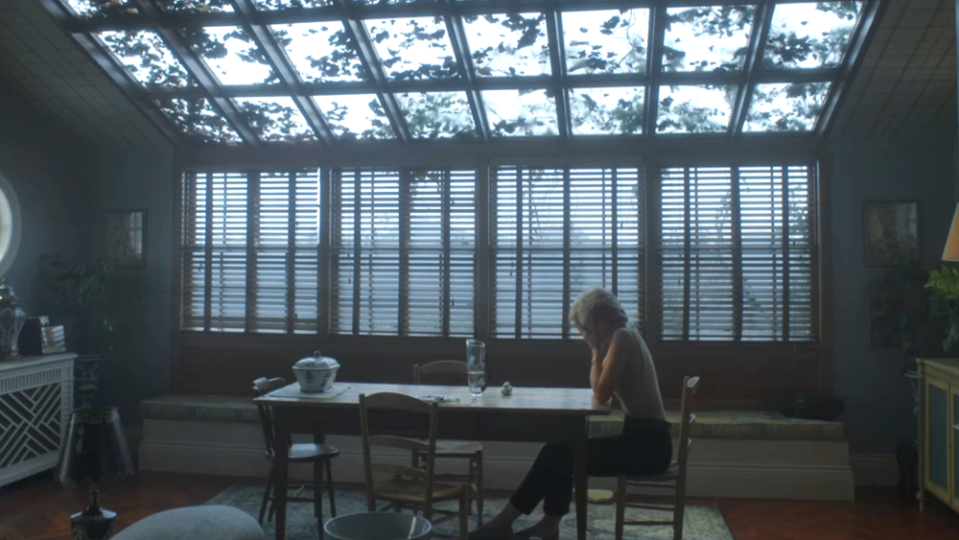‘The Crown’ Got Dark in Season 5, but Its Best Scene Was Blue

Season 5 of “The Crown” sets sail over some very troubled waters and makes no moves to avoid the rocks. Even folks whose knowledge of Princess Di begins and ends with the Beanie Baby know that her divorce from Charles is followed closely by her death in a car crash. But there’s a difference between dramatizing the royal family’s doldrums and succumbing to them.
A darkness hangs over the fifth season of “The Crown” visually, as Martin Childs’ production design leans into yellow and brown rooms, and the series’ team of cinematographers cast shadows that wouldn’t be out of place in the candle-lit “Victoria”, whether scenes take place in Windsor Palace or the middle of the Gulf of Naples. Even the ever-vibrant Princess Margaret’s (Leslie Manville) mostly sweet, slightly bitter rapprochement with Peter Townsend (Timothy Dalton) kicks off in a dusky, wood-paneled ballroom that feels slightly caught in amber, the light motivated by shaded lamps and crystals that don’t seem to catch any reflection.
More from IndieWire
'The Diplomat': Keri Russell and Rufus Sewell on Building Their Relationship Through Sweat and Panic
'Fast X' Gets Expedited Early PVOD Release and Easily Wins the Race
Which is not to say that there aren’t gorgeous highland vistas and horses trotting through dappled sunlight, too. This is still “The Crown.” But the show is seemingly less interested in visually highlighting the extravagances, large and small, that both shape and confine the royals’ lives. The confrontation between Margaret and Elizabeth (Imelda Staunton) at the end of Episode 4 takes a lounge featured throughout the series and darkens the edges of it almost to charcoal, the gilt columns and wall-high bookshelves an indistinguishable blur behind Margaret as she lists the ways her sister has ruined her life.

It’s an appropriate choice from director May el-Toukhy and cinematographer Rasmus Videbæk to make Buckingham Palace look blighted. But the visual gloom throughout Season 5 adds a weight that drags on “The Crown.” The show’s somewhat desaturated look can’t help but impact its tone, which can be ponderous even when Peter Morgan isn’t making incredibly grim metaphors.
Episode 9, “Couple 31,” should be the gloomiest and the weightiest of this season as the episode that finally accomplishes Charles and Diana’s divorce. But a funny thing happens once “The Crown” is freed from the trudge towards the wreck of their marriage: Morgan and director Christian Schwochow can actually add the kind of imagined sequence that makes historical fiction fun in the first place.
Charles comes to visit Diana at Kensington Palace after the divorce is finalized, perhaps looking to put a more noble, amicable seal on the break. The two speak, wry and honest, gentler with each other now that they’re both free and Diana offers to cook Charles an omelet that ends up becoming scrambled eggs. This kitchen is easily the nicest bit of Kensington Palace we see on the show: walls are cool, blue, and open; the set design is posh but not floridly so. Cinematographer Frank Lamm, no stranger to bending drear British light to a variety of moods, lets the cool, misty sunlight coming through slatted windows scatter on the granite countertops, giving the air in the scene the same weirdly serene clarity that Charles and Diana have in this moment.

Clearing the air, however, isn’t always beneficial. Charles and Diana try to hold an autopsy of their marriage, with the operative word being try. Even in complete privacy, Charles can’t stop fishing for validation and Diana can’t stop cutting him down to size. The idea of the scene alone is electric, a conversation that absolutely no one would be privy to but that offers Morgan the opportunity to let “The Crown” have the final word on the characters of Diana and Charles and their marriage.
The visual grammar of the sequence is nothing fancy in itself. Compositions start wide and off to the side, like an interloping servant, come closer in over-the-shoulder shots and then into yet more intimate close-ups on the actors’ faces as each says both the best and the worst things they can to each other. The sound design is minimal, the stillness of the room throwing all the focus onto the actors’ dialog; the softness of Debicki’s voice, especially, carries the outsized force of Diana’s pain and regret.
As soon as Diana and Charles get really real with each other, though, the spell breaks. Charles gets up from the table and Lamm frames Diana against the window shutters and the wood panel bench of the breakfast nook. The coolness and relief of the atmosphere evaporate, and Charles and Diana look a lot like they have throughout the season. It’s in this much-less forgiving light that Charles fobs all responsibility for entering into a loveless marriage onto his parents, and Diana tells him that he will never be popular enough to succeed as a monarch (an interesting take to watch now that the U.K. anthem has officially changed to “God Save The King”).

Charles storms out, but the scene ends with a wide, more centered shot of Diana that exposes a key piece of Childs’ set. With the inclusion of some ceiling windows artfully covered in vines, the gracious kitchen reveals itself to be half a glass cage. What gives the episode its weight and makes it rank up there with the best episodes of “The Crown” is the knowledge that it’s a cage Diana, alone and exposed, is going to die in.
Best of IndieWire
Sign up for Indiewire's Newsletter. For the latest news, follow us on Facebook, Twitter, and Instagram.

 Yahoo News
Yahoo News 
